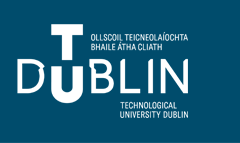Assessing the Biological Safety of Atmospheric Cold PlasmaTreated Wheat Using Cell and Insect Models
Document Type
Article
Rights
Available under a Creative Commons Attribution Non-Commercial Share Alike 4.0 International Licence
Disciplines
Public and environmental health, 3.3 HEALTH SCIENCES
Abstract
Atmospheric cold plasma (ACP) is under investigation for an extensive range of biocontrol applications in food biosystems. However, the development of a novel intervention technology requires a thorough evaluation of the potential for negative effects and the implications for the human and animal food chains’ safety. The evaluations were performed using a contained, high-voltage, dielectric barrier discharge plasma system. The cytotoxicity of two types of food models—a liquid model (wheat model medium (WMM)) vs. a solid model (wheat grain extract (WGE)) was compared in vitro using the mammalian cell line CHO-K1. The residual toxicity of ACP treatment of grains for food purposes was assessed using the invertebrate model Tribolium castaneum, by feeding the beetles with flour produced from ACP-treated wheat grains. The cytotoxic effects and changes in the chemistry of the ACP-treated samples were more pronounced in samples treated in a liquid form as opposed to actual wheat grains. The feeding trial using T. castaneum demonstrated no negative impacts on the survivability or weight profiles of insects. Investigations into the interactions of plasma-generated species with secondary metabolites in the food matrices are necessary to ensure the safety of plasma for food applications.
DOI
https://doi.org/10.3390/foods9070898
Recommended Citation
Bourke, P. et al (2020) Assessing the Biological Safety of Atmospheric Cold PlasmaTreated Wheat Using Cell and Insect Models,Foods, 9(7) DOI: 10.3390/foods9070898
Included in
Food Biotechnology Commons, Food Chemistry Commons, Food Microbiology Commons, Food Processing Commons


Publication Details
- Foods 9(7):898
DOI: 10.3390/foods9070898